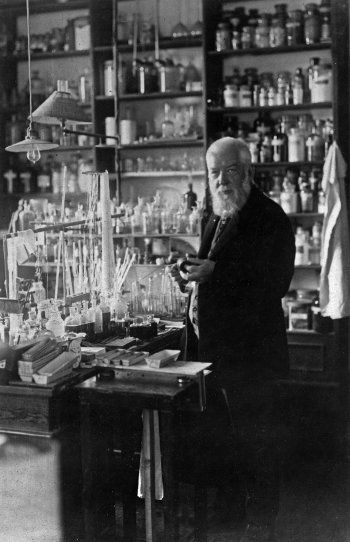September 2, 1853 in Riga (Latvia) – April 3, 1932 in Grossbothen (Germany)
Born in Riga, which at that time was part of the Russian Empire (now the capital of Latvia), he graduated in 1875 from the University of Dorpat (today University of Tartu). He worked as a professor at the said center until 1881. Afterwards he was a professor at the Riga Polytechnic Institute until 1887.
That same year, he obtained the chair of Physical Chemistry at the University of Leipzig and held this position until 1906. During this time he founded the Ostwald Institute, the first dedicated to physical chemistry, which he directed until 1906. At which point he decided to abandon teaching to dedicate yourself completely to study and research.
His studies on catalysis and his research on the fundamental principles governing chemical equilibria and reaction rates earned him the Nobel Prize in Chemistry in 1909.
He is responsible for the formulation of the Dilution Law (known as Ostwald's Law) which refers to dissociation phenomena in electrolyte solutions, as well as the discovery, in 1902, of a method for preparing nitric acid. by oxidation of ammonia. He also invented a viscometer that is still used to measure the viscosity of solutions.
In addition, he also defended a new theory on colors and founded, in 1920, in Dresden (Germany) a laboratory specialized in this matter.
Throughout his career, he published scientific memoirs and, closely related to this prodigious scientific activity, became deeply interested in the history of science (he founded the collection of the Classics of the Exact Sciences, in which several important works of classics were published. of chemistry, including Avogadro), by painting and by the philosophy of science and the philosophy of nature.
Out of curiosity, Ostwald became extremely interested in the idea of adopting an international auxiliary language, learning Esperanto first. Later he became interested in the reform of Esperanto, Ido, and was a member of the Delegation for the adoption of an international auxiliary language, donating part of the money obtained from winning the Nobel Prize to this movement. Part of his work is translated into that language.
He also worked in information science, as he was interested in the development of the knowledge organization of gray literature and technical documentation. He made proposals for knowledge to be organized in an analytical, standardized, normalized and internationalized way, becoming a precursor of the semantic web. As a result of his efforts, he was the creator, together with Karl Wilhelm Bührer and Adolf Saager, of the International Institute for the Organization of Intellectual Work, founded in Munich in 1911 and commonly known as Brücke. In it, it was intended to create the first documentation center where all the documents and bibliographical references produced by libraries, museums, associations, societies, companies… would be organized using a new tool in Europe, the Decimal Classification, as a method of indexing and classification. from Dewey.



